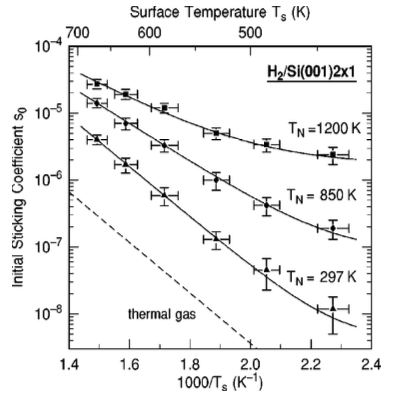Effect of beam energy and surface temperature on the dissociative adsorption of H2 on Si(001)
| Reviews and Highlights | Quantum Science | Molecular and Soft-matter | Ultrafast Nano-optics and Nanophotonics | Mineralogy and Geochemistry |
|---|
Michael Dürr, Markus B. Raschke, and Ulrich Höfer
The Journal of Chemical Physics 111, 10411 (1999).
DOI PDF

Dissociative adsorption of H2 from a high-flux supersonic molecular beam on flat and vicinal Si(001) surfaces was investigated by means of optical second harmonic generation (SHG). The initial sticking coefficients for terrace adsorption varied between 10-8 and 10-4. They revealed a strongly activated dissociation process, both with respect to the kinetic energy of the incident molecules (70 meV ≤ Ekin ≤ 380 meV) and the surface temperature (440K ≤ Ts ≤ 670 K). The results indicate that dynamical distortions of Si surface atoms can lower the effective adsorption barriers from 0.8±0.2 eV to almost negligible values. Previously proposed defect-mediated processes can be ruled out as a major adsorption channel.
